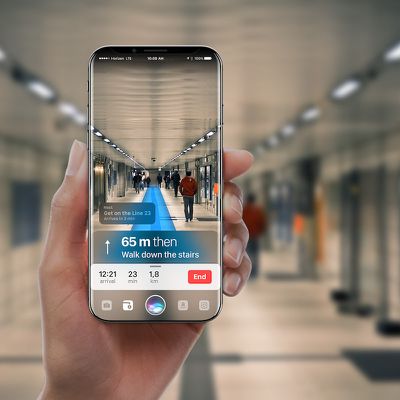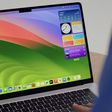Apple has asked one of its manufacturing partners to ready components for use in rear Time-of-Flight (ToF) camera lenses said to be coming to next year's iPhone lineup, according to DigiTimes.

Apple has reportedly asked its supply chain partner to supply VCSEL components for use in rear ToF camera lens in its mobile devices to be released in 2020, according to supply chain sources.
Multiple sources have claimed that Apple's 2020 iPhones will include a laser-powered time-of-flight 3D rear camera that will result in significant improvements to AR experiences, including Bloomberg's Mark Gurman and Apple analyst Ming-Chi Kuo.
VCSELs, or vertical-cavity surface-emitting lasers, are a key component of Apple's TrueDepth camera in the iPhone XR, XS, and XS Max, and power several flagship features like Face ID, Animoji and Portrait mode selfies, as well as the proximity-sensing capabilities of AirPods. However, a ToF camera system is a major step up from TrueDepth due to its more advanced use of laser.
TrueDepth relies on a structured-light technique that projects a pattern of 30,000 laser dots onto a user's face and measures the distortion to generate an accurate 3D image for authentication. By contrast, ToF calculates the time it takes for a laser to bounce off surrounding objects to create a 3D image of the environment. This allows for more accurate depth perception and better placement of virtual objects, and should also result in photos better able to capture depth.
Bloomberg says that the rear camera in Apple's 2020 iPhones will be able to scan areas up to 15 feet from the device. Apple's front-facing TrueDepth camera uses 3D technology but its structured-light system only works at distances of 25 to 50 centimeters.
Apple is said to have gained a two-year lead over its rivals in the smartphone industry in the area of 3D sensing technology, having secured the necessary hardware way in advance of competitors. Sony could be the ToF supplier that DigiTimes is referring to in the paywalled article, as Apple has reportedly been in talks with Sony over ToF sensor tests. Although in December 2017, Apple said it planned to invest $390 million in Finisar Corp, which currently supplies the components for VCSELs.
At the time, Apple said its Finisar investment would enable the supplier to exponentially increase its R&D spending and high-volume production of VCSELs. Apple initially sourced VCSELs for 2017's iPhone X chiefly from California-based Lumentum, but it was bottlenecks in production there that helped spur the $390 million deal with Finisar.
Lumentum subsequently ramped up additional manufacturing capacity for VCSELs and edge-emitting lasers in the first half of fiscal 2019. Another producer, Austria-based Ams, also makes VCSEL chips, and in March 2018 said it had won a large deal with an unnamed smartphone maker, so there are a few potential suppliers that Apple could be leaning on.
There were originally some rumors suggesting Apple would introduce a rear 3D camera system in its 2019 iPhones, but Kuo said that wouldn't happen because Apple needs 5G connectivity, augmented reality glasses, and a more powerful Apple Maps database to truly take advantage of the AR capabilities afforded by a ToF camera.
Bloomberg has since confirmed that Apple was aiming to put the 3D rear camera system in this year's iPhones, but ultimately had to delay its plans. Whether that decision is related to rumors that Apple has had to temporarily stop developing AR/VR headsets remains unclear.





















Top Rated Comments
3D Emojis/Animoji’s!
Thanks for defining what the main purpose of the "iPhone" is for the whole world.:rolleyes:
It also aligns with Tim Cook introducing the iPhone X a couple years ago where he said (paraphrased) that the X is a demonstrator/testbed of sorts for the technologies needed to push Apple into AR. With the front facing camera used for FaceID (and software) being instrumental and key towards that push. As an aside, its why FaceID will not be going away.
The level of innovation to now bring backside 3D time-of-flight camera sensing technology in miniaturized form to a consumer device is nothing short of astounding.
This is another feature that has nothing to do with the main purpose of the iPhone (phone, simple camera and internet/email).
Nevertheless this will drive up the prices and make the phones more complex than they need to be.
I hope there will be a strong backlash on prices and Apple will be forced to release a more basic line of iPhones and then a high priced line of phones for people who want to do all the fancy AR, VR, Gaming, high end video things.